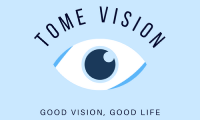Understanding Astigmatism and How to Correct It
Astigmatism is a common eye condition that affects the way light enters your eye, causing blurry vision or distorted images. It occurs when the cornea or lens of your eye has an irregular shape, preventing the light from properly focusing on the retina. This condition can affect people of all ages and can cause significant discomfort and vision problems if left untreated. However, there are several ways to correct astigmatism and improve your visual acuity.
Understanding Astigmatism:
1. Causes and Symptoms:
– The exact cause of astigmatism is still unknown, but it is believed to be primarily genetic.
– Some common symptoms of astigmatism include blurred vision, eyestrain, headaches, and difficulty seeing at night.
– Astigmatism often occurs alongside other refractive errors, such as nearsightedness or farsightedness.
2. Types of Astigmatism:
– Corneal astigmatism: This occurs when the cornea has an irregular shape, often resembling the shape of a football.
– Lenticular astigmatism: This occurs when the lens inside the eye has an irregular shape.
– Mixed astigmatism: This refers to a combination of both corneal and lenticular astigmatism.
How to Correct Astigmatism:
1. Eyeglasses:
– The most common and simplest way to correct astigmatism is by wearing glasses with cylindrical lenses. These lenses have different powers in different meridians to compensate for the irregularity in the cornea or lens.
– It is important to have regular eye examinations to ensure that your glasses prescription is up to date.
2. Contact Lenses:
– Contact lenses can also be used to correct astigmatism. There are two main types available: rigid gas-permeable (RGP) lenses and soft toric lenses.
– RGP lenses provide sharper vision, but they may take some time to adapt to and can be less comfortable than soft toric lenses.
– Soft toric lenses are made of a flexible material and are more comfortable to wear. They are available in disposable and extended wear options.
3. Refractive Surgery:
– Refractive surgery, such as LASIK or PRK, can also be a long-term solution for astigmatism.
– During these procedures, a laser is used to reshape the cornea, correcting its irregular shape and providing clearer vision.
– It is important to consult with an eye care professional to determine if you are a suitable candidate for refractive surgery.
4. Orthokeratology (Ortho-k):
– Ortho-k is a non-surgical, reversible procedure where special rigid contact lenses are worn overnight to temporarily reshape the cornea.
– These lenses gently reshape the cornea, allowing light to focus correctly on the retina and providing clear vision during the day.
– This method is particularly useful for those who want an alternative to surgery or are unable to wear contact lenses during the day.
In conclusion, astigmatism is a common eye condition that can affect your vision. Understanding the causes and symptoms of astigmatism is essential for early detection and appropriate treatment. Eyeglasses, contact lenses, refractive surgery, and orthokeratology are effective ways to correct astigmatism and improve your visual acuity. It is important to consult with an eye care professional to determine the best treatment option for your specific needs. Regular eye examinations and keeping your prescription up to date are crucial for managing astigmatism effectively.
